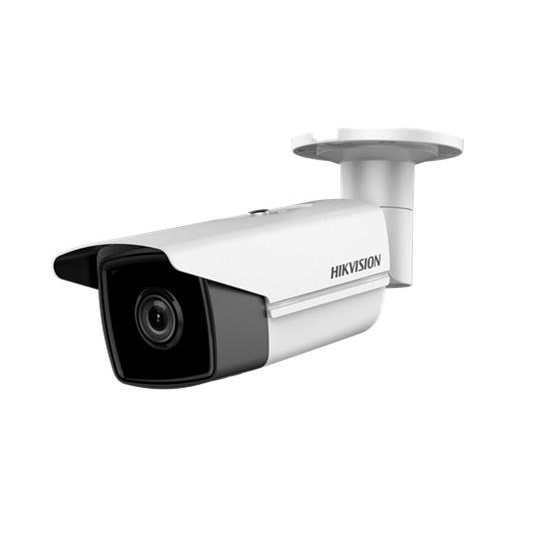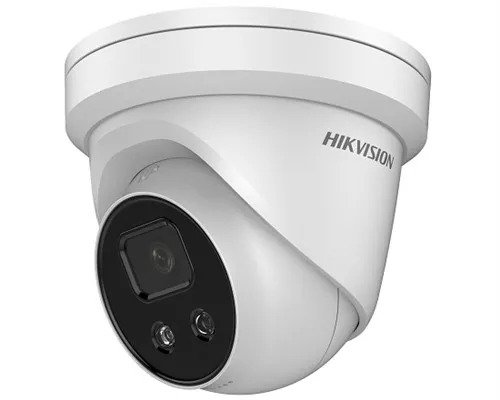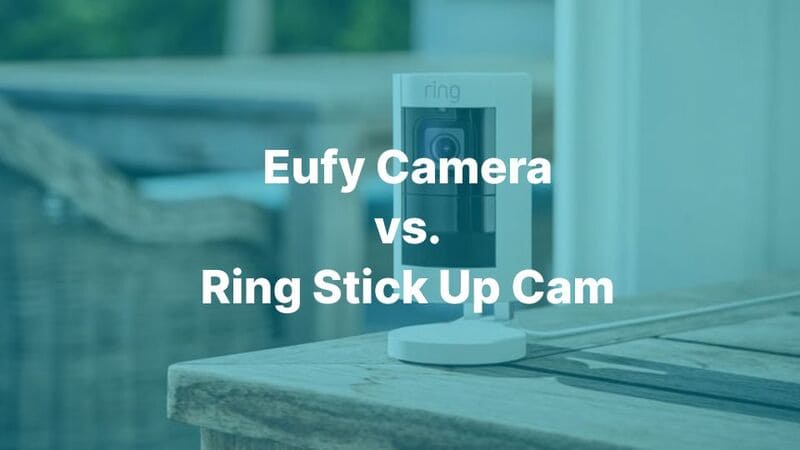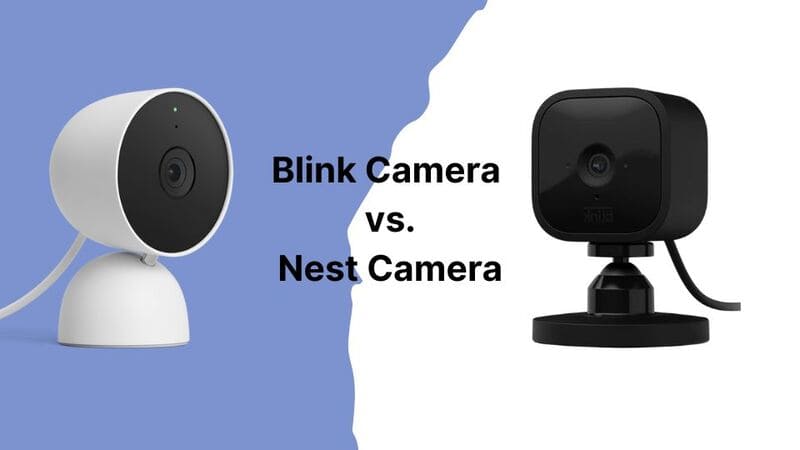Did you know 40% of security camera failures stem from choosing the wrong type for your environment? Bullet cameras and turret cameras dominate modern surveillance systems, yet their distinct designs create critical trade-offs. While bullet cameras’ cylindrical bodies deter intruders with visible authority, turret cameras’ discreet domes enable covert 360° monitoring through ball-and-socket flexibility.
This blog dissects their weather resistance, installation adaptability, and video coverage through real-world testing: Can bullet cameras’ 200-foot night vision outperform turret models’ vandal-proof durability? Which thrives in dust storms vs. indoor retail spaces? We’ll decode specs like IP67 ratings, focal lengths, and tamper resistance to help you invest wisely – because 72% of users regret rushed surveillance purchases.
What is a Bullet Camera?

Bullet cameras are characterized by their cylindrical shape resembling a bullet or lipstick tube. They typically measure 2-3 inches in diameter and 4-6 inches in length.
Key Features
- Weatherproof Design: I’ve noticed most bullet cameras have IP66 or IP67 ratings. This means they resist dust and water. I believe this makes them reliable in different kinds of weather.
- IR Night Vision: In my experience, these cameras offer night vision from 30 to 100 feet. Some high-end ones can see up to 200 feet. This allows for good monitoring all day and night, which I find essential.
- Visible Deterrent Effect: Their noticeable design helps scare off criminals. I believe mounting them where people can see them can cut property crime by up to 50%.
Common Specifications
- Resolution: You can choose resolutions from 2MP (1080p) up to 8MP (4K). I suggest higher resolutions for clearer pictures.
- Focal Length: These cameras often come with 2.8-12mm varifocal lenses. I like this because it gives you freedom to adjust the zoom and focus.
- Field of View: The horizontal view is often between 80-110 degrees. I think this range works well for covering wide areas.
Popular Use Cases
I find bullet cameras work very well outdoors. Their design is tough and adaptable. People often use them for:
- Monitoring building perimeters.
- Securing parking lots and driveways.
- Overseeing large outdoor areas, such as construction sites.
- License plate recognition at entrances and exits.
Bullet cameras make up about 40% of the world’s video surveillance market (Cognitive Market Research). To me, this shows many people want them and find them useful in different situations.
What is a Turret Camera?

A turret camera is a dome-shaped security camera with a ball-and-socket design that allows for flexible positioning.
Key Features
- Can Turn 360 Degrees: This allows flexible positioning. You can cover many different angles.
- Wide Field of View: The view often ranges from 70° to 120°. I find this provides wide coverage.
- Toughness and Weather Protection: IP66 or IP67 weatherproof rating, good for outdoor use. IK10 vandal-resistant rating means they are very tough against damage.
- Compact Size: They are usually 3 to 5 inches across. This size lets you install them discreetly.
- Infrared Night Vision: The infrared range is 30 to 100 feet. I believe this is great for watching areas at night.
- Options for High Resolution: You can get resolutions from 2MP to 8MP (4K). I think this meets many different requirements.
- H.265/H.264 Video Compression: This feature helps you store and send video files efficiently.
Common Specifications of Turret Cameras
- Focal Length Options: Fixed: 2.8mm, 4mm;Varifocal: 2.7-13.5mm
- Frame Rate: Up to 30 fps at full resolution.
- Working Temperature Range: They work well between -30°C to 60°C (-22°F to 140°F).
- Power Options: You can use both PoE (Power over Ethernet) and 12V DC.
Popular Places I Recommend Using Them
- Retail stores and supermarkets
- Office buildings and lobby areas
- Parking lots and garages
- School hallways and classrooms
- Home entryways and driveways
Bullet Cameras vs Turret Cameras: Key Differences
Design: Discreet Monitoring
- Bullet Cameras are shaped like a cylinder, much like a bullet. This shape makes them easy to spot as security cameras.
- Turret Cameras use a ball-and-socket design. People often say they look like a cut sphere. In my opinion, this gives them a small structure that doesn’t stand out.
Visibility: Deterrence
- Bullet Cameras: Because bullet cameras are easy to see, I believe they work well to scare off possible intruders. Their look clearly signals that someone is watching.
- Turret Cameras: Turret cameras have a quiet look that doesn’t stick out much. From my experience, they blend well with their surroundings. I recommend them for places where you want security without obvious cameras, like nice home interiors.
Tampering Risk
- Bullet Cameras: These cameras can have impact ratings up to IK10. Still, I think because they stick out, they are easier for people to tamper with or damage.
- Turret Cameras: Their small, mounted shape makes them hard to reach. I find they are not targeted for vandalism as often. They also offer good impact resistance, often up to the same IK10 rating.
Installation Process
Bullet Cameras: From my experience, bullet cameras usually mount on walls or poles using brackets. When installing them, I need to fix their direction precisely. This step ensures they capture the view I want. Changing the angle later can be a hassle. It requires moving the entire camera and its mount.
Turret Cameras: I find turret cameras offer more choices for installation. You can mount them on ceilings, walls, or under eaves. Their ball-and-socket design makes this possible. This design makes it easier for me to adjust the camera’s direction by hand, even after installation. This reduces the need for perfect initial positioning, which I appreciate.
Post-installation Flexibility
Bullet Cameras: In my view, these cameras offer limited flexibility after you install them. Most standard bullet cameras cannot pan, tilt, or zoom (PTZ). If I want to change the viewing angle, I usually have to remount the camera completely. Some advanced bullet models might include PTZ features, but I don’t see them very often.
Turret Cameras: I find turret cameras provide much greater flexibility after installation. The ball-and-socket part lets you turn the camera head 360 degrees. This allows adjusting the viewing angle without moving the mount. While not all turret cameras have remote-controlled PTZ, I think the manual adjustment they offer is very useful.
Environmental Suitability and Durability
Bullet Cameras
- Weather Resistance: Bullet cameras have strong weatherproof ratings, often IP66 or IP67. I find this means they work well in tough weather like dust storms, heavy rain, and extreme temperatures. Their tube shape has fewer openings for water or dust. This makes them last longer.
- Ideal Applications: I often find they are installed outside where they face the weather. You might see them at places like stores, gas stations, factories, and construction sites. In my experience, they need to be tough enough for the weather there.
Turret Cameras
- Weather Resistance: Turret cameras also have high IP ratings, like IP66 or IP67. So, they can handle tough environments. But I think their flexible and subtle design makes them better for indoors or covered outdoor spots.
- Ideal Applications: I often see these cameras used inside places like lobbies, schools, and hospitals. For outdoor use, I suggest placing them in covered areas. This reduces their exposure to bad weather. If you get a turret camera with the right rating, I believe it can still work well outside when needed.
Video Quality and Coverage: Field of View and Focus
Bullet Cameras
- Video Quality: In my experience, bullet cameras focus well on things far away. This makes them great for getting clear pictures of specific targets, like faces or license plates, from a distance. I find their lenses work best outdoors. They have a narrow focus. This gives you clear video when watching specific spots.
- Coverage: These cameras see a smaller area (narrower Field of View or FoV). I suggest using them for long hallways or watching exact points. They give you focused video outdoors or in specific watch areas.
Turret Cameras
- Video Quality: I notice turret cameras have wider lenses. This lets them cover more space. They work well for watching large areas or things close by. I like that they handle low light better. They often have bigger sensors and wider lens openings (apertures). This means they work well even when the lighting changes.
- Coverage: Because they see a wider area (wider FoV), I recommend turret cameras for watching smaller spaces up close. Think lobbies, entrances, or shops. They are useful when you need to see a bigger picture in one spot.
Maintaining
Bullet Camera
- Cleaning: I find the exposed lens design makes cleaning simple. You can just wipe the lens without much trouble.
- Dust: Based on my experience, the round shape helps reduce dust build-up on the lens. This makes upkeep easier for me.
- Overall Care: I suggest keeping the whole camera body free from dirt. However, I find the lens itself usually needs less attention.
Turret Camera
- Dust Problems: I’ve noticed the flat lens cover tends to collect dust. This dust can block the view and lower picture quality.
- Cleaning Frequency: Because of this design, I recommend cleaning these cameras often. This is very important if you install them in dusty locations.
- Keeping it Aligned: The ball-and-socket joint sometimes needs adjusting by hand. In my experience, this adjustment keeps the camera pointing correctly.
Bullet cameras excel in outdoor vigilance with weatherproof durability (IP66/67) and visible deterrence, ideal for parking lots and perimeters. Turret cameras, with 360° adjustability and vandal-resistant domes (IK10), dominate indoor/covert surveillance in retail or lobbies. While bullets focus on long-range clarity (200ft night vision), turrets offer wider FoV and discreet monitoring—critical choices hinging on environment and threat profile.
Struggling to choose? ICSEECAM, a leading CCTV manufacturer in China, simplifies decisions with bulk orders of bullet/turret cameras, tailored to your needs. From TELEC-certified 4K models to solar-ready units, we cut through complexity with competitive pricing and end-to-end logistics.
Ready to secure your space smartly? Email [info@icseecam.com] today. Whether deploying 50 cameras or 5,000, our expertise transforms China’s manufacturing edge into your security advantage—because every angle matters, and every second counts.






